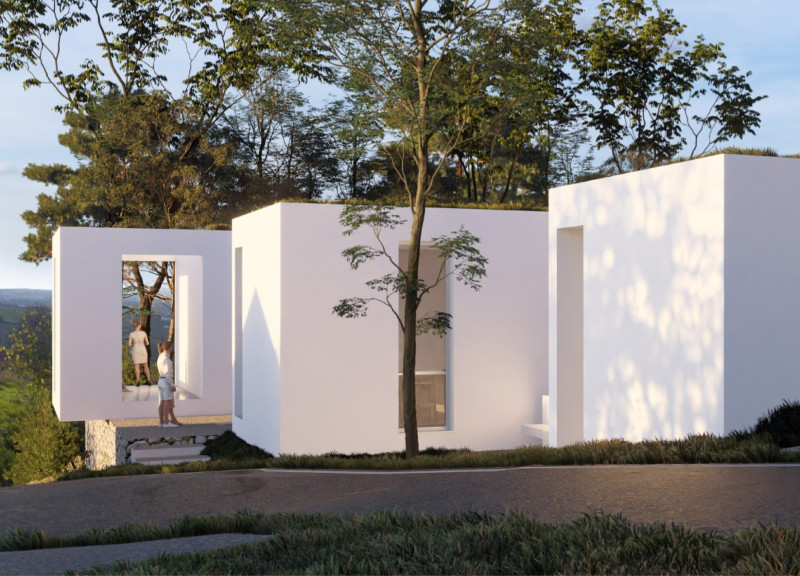5 key facts about this project
The project functions as a retreat, providing accommodations and communal spaces for guests seeking tranquility and connection with nature. The layout is carefully configured to promote interaction among guests while allowing for private moments. Multi-functional spaces such as the tasting lounge and meditation area are integral to the function of the guesthouse, contributing to a comprehensive experience that encompasses leisure, relaxation, and cultural exploration.
Sustainable design approaches are a distinguishing feature of Vila Caiada. The incorporation of a green roof not only improves insulation but also contributes to biodiversity in the area. Additionally, the extensive use of glass panels ensures maximum natural light penetration while maintaining visual continuity between indoor and outdoor environments. This connection to nature is further enhanced by orienting openings to capitalize on views of the picturesque landscapes.
The materiality of the project reinforces its architectural intent. Predominantly using concrete for structural elements, local stones for anchoring the building within its environment, and whitewashed walls that reference traditional styles, the design establishes a strong sense of place. The use of Portuguese cedar indoors serves both aesthetic and functional purposes, providing warmth and comfort in guest areas.
Another notable aspect of this project is its attention to cultural context. Vila Caiada integrates local craftsmanship into its design, evident in the furnishings and architectural details that reflect the region's heritage. This approach distinguishes Vila Caiada from typical commercial accommodations, fostering a deeper connection to the local community and its history.
To gain finer insights into the architectural design, it is recommended to explore the architectural plans, architectural sections, and architectural ideas presented alongside Vila Caiada. These resources will provide further clarity on how the project harmonizes with its environment while emphasizing design intent and functional considerations.


























